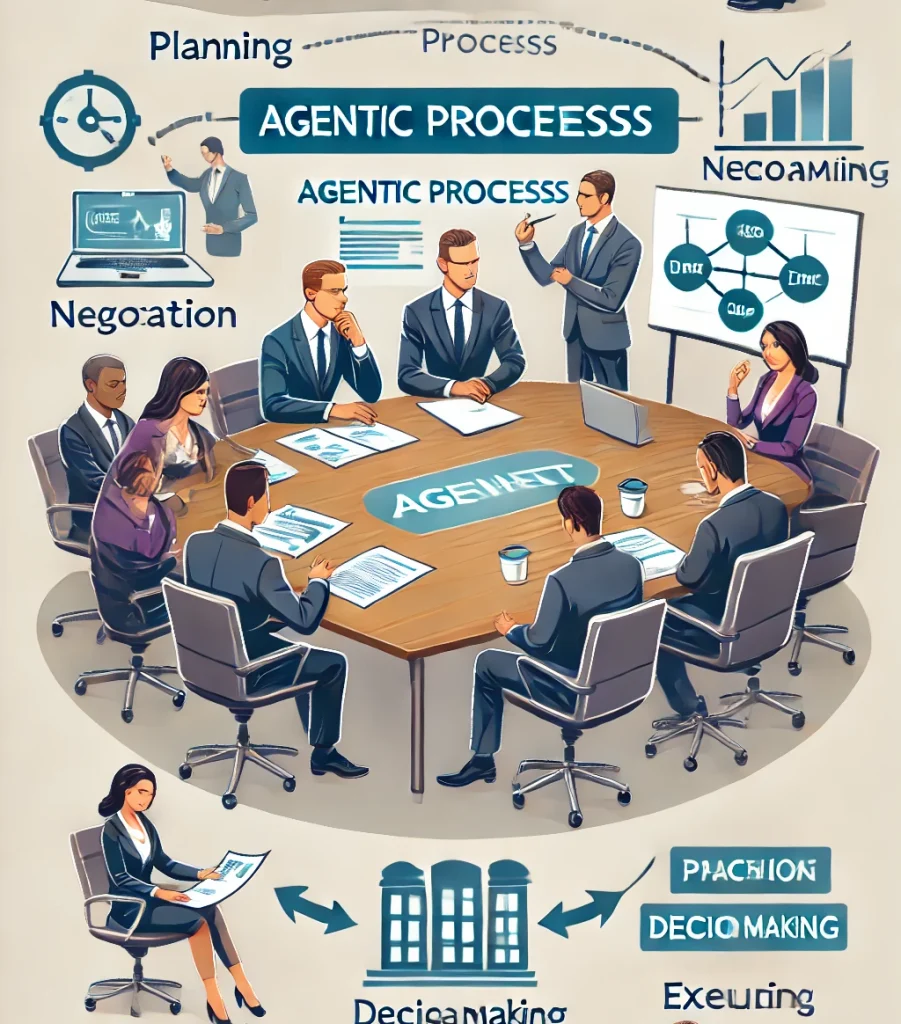How Does Agentic Processes Look Like in Procurement? Explained with an Example

Introduction
Most of us have encountered AI in the form of chat-based assistants, helping us answer questions or perform simple tasks. But the real potential of AI lies in creating “agentic processes”—workflows where AI agents handle specific parts of a process, streamlining and accelerating operations. Rather than taking over entire jobs or performing isolated tasks, these agents work alongside human counterparts to optimize specific steps in complex workflows.
In procurement, agentic processes represent a powerful transformation. Rather than having one analyst manually complete every task in tactical sourcing, multiple AI agents handle distinct, targeted tasks, such as compliance checks, supplier identification, or bid evaluation. This division of labor not only speeds up the process but reduces costs and ensures greater accuracy. Procurie, for example, leverages AI agents to automate these procurement steps, enhancing efficiency and delivering value.
Key Insight: AI-driven agentic processes are the future of efficiency. They not only cut costs but also redefine how people and technology collaborate.
Deep Dive: How Agentic Processes Transform Tactical Sourcing
Let’s zoom into a specific example: tactical sourcing. This is a process with multiple stages, and each stage offers an opportunity for AI agents to play a distinct role. The diagram below provides a real-life scenario between a fully human-driven process and one supported by AI agents.
Here’s how each agent operates within the tactical sourcing process:
- Agent One – Qualifying and Clarifying Needs (Step 2)
- Human Time: 180 seconds | AI Time: 3 seconds
- AI Agent’s Role: Rather than having humans clarify each request, Agent One rapidly assesses and qualifies the need. This means that critical information gaps are filled instantly, and redundant back-and-forths with the requester are minimized. By clarifying requirements upfront, Agent One removes a bottleneck early in the process. AI has great ability to understand the product requested and clarify the specifications and other details for most part better than human. Imagine, someone raising a request for Compactor, human who do not have knowledge of what a compactor is at the mercy of Google to find out more information about a compactor and it takes way more than 3 mins. For AI, this is a breeze.
- Agent Two – Compliance Check (Step 4)
- Human Time: 300 seconds | AI Time: 25 seconds
- AI Agent’s Role: Compliance is vital in procurement but often tedious. Agent Two runs compliance checks across internal channels and policies, reducing risk and ensuring that all requests are routed through the right supplier, right price and right approvals too. This agent eliminates the need for manual cross-referencing, bringing both speed and rigor. For companies without sufficient time, this process is super hard, but for AI, it will be pretty quick.
- Agent Three – Supplier Identification and Shortlisting (Step 5)
- Human Time: 240 seconds | AI Time: 20 seconds
- AI Agent’s Role: Supplier identification is a data-intensive task that often requires extensive searching and filtering. Agent Three uses advanced algorithms to sift through supplier databases, considering factors such as pricing history, quality scores, and past performance. It automatically generates a list of top suppliers, allowing the human reviewer to approve the selection more efficiently.
- Agent Four – Quote Comparison and Bid Evaluation (Step 10)
- Human Time: 300 seconds | AI Time: 30 seconds
- AI Agent’s Role: Comparing quotes is another time-consuming step, where human error can lead to costly misjudgments. Agent Four analyzes bids, benchmarks them against historical data, and prepares a recommendation that factors in cost, delivery timelines, and quality standards. This automation removes bias and enables objective, data-driven decisions.
Data Insight: With these agents, AI reduces total processing time from 1,020 seconds to 78 seconds, cutting human costs from $66.41 to less than a few $$s. These savings highlight how agentic processes scale operational efficiency dramatically.
Value Beyond Speed and Cost: Accuracy and Consistency
Beyond time and cost savings, AI agents bring a level of accuracy and consistency in the process that is hard to achieve with manual processes. For example:
- Error Reduction: Automated compliance checks prevent costly errors in compliance checks.
- Data Consistency: With AI agents, data is analysed uniformly, ensuring that each supplier or bid is evaluated on the same criteria without human bias. Also, having AI do some steps, ensures those steps are never missed and always followed.
- Scalability: By assigning specific tasks to AI, organizations can scale their procurement operations without adding headcount.
Future of Agentic Processes in Procurement
Agentic processes are an evolution from isolated AI tools to an integrated AI workforce. Imagine a procurement system where agents continuously learn from past transactions, adjust supplier recommendations based on real-time data, and refine compliance checks as policy change. This isn’t a futuristic vision—these are capabilities within reach today, provided organizations implement and adopt systems that are capable of putting AI in a process workflow.
Expert Tip: Businesses need to move beyond “AI as a co-pilot” and think of AI as an Agent that embeds itself into every layer of the process.
Conclusion: Leveraging Agentic Processes for a Competitive Edge
AI is transforming procurement, and agentic processes offer a glimpse into its full potential. However, adopting these processes requires rethinking system architectures. Legacy companies may struggle to incorporate this level of AI-driven transformation without a complete overhaul.
